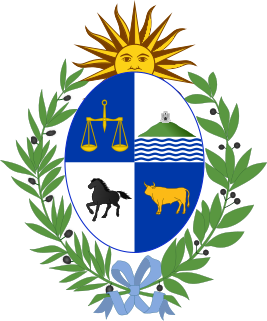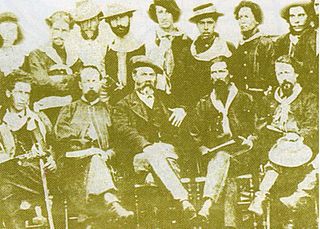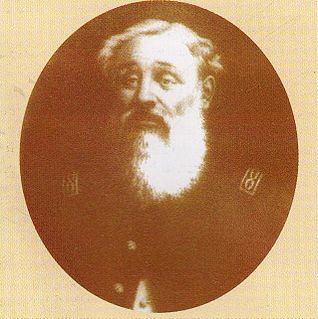 W
WArtiguism is the set of political ideas, economic and social, of José Gervasio Artigas, the main leader of the Oriental Revolution held in the Oriental Province of the United Provinces of the Río de la Plata, which was a predecessor of the modern Republic of Uruguay.
 W
WChamangá is an area within a rocky terrain in the Flores Department of Uruguay, where a considerable quantity of ancient rock art has survived.
 W
WChaná were one of the native nations of Uruguay.
 W
WThe First Cevallos expedition was a series military actions between September 1762 and April 1763, by Spanish colonial forces led by Don Pedro Antonio de Cevallos, Governor of Buenos Aires, against Portuguese colonial forces in the Banda Oriental area on the aftermath of the failed Spanish and French Invasion of Portugal, as part of the Seven Years' War.
 W
WJoaquín Lenzina, commonly known as "Ansina", accompanied José Gervasio Artigas throughout his life as his most loyal friend and follower.
 W
WThe Federal League or League of Free Peoples was an alliance of provinces in what is now Uruguay, Argentina and Brazil that aimed to establish a confederal organization for the state that was emerging from the May Revolution in the war of independence against the Spanish Empire.
 W
WA Caudillo is part of the larger Iberian tradition of authoritarian leaders, with roots in the Iberian past, particularly in the Reconquista. A number of military leaders who were part of the Spanish American struggle for independence took on political roles in during the establishment of new sovereign nation-states. The establishment of military strong men as the head of new national governments did not generally come via elections, but many did have strong popular support. Caudillos often have a personalist connection with their popular followers, combining charisma and machismo ("manliness"), access to political and economic power. They often desire to legitimize their rule. Many caudillos brought order to their areas of control, but also resorted to violence with their armed supporters to achieve it. The early nineteenth century has been considered the "Age of Caudillos," but authoritarian regimes existed in the twentieth century as well, with caudillismo casting a long shadow.
 W
WPedro de Mendoza y Luján was a Spanish conquistador, soldier and explorer, and the first adelantado of New Andalusia.
 W
WThe National Council of Administration was part of the executive power in Uruguay between 1919 and 1933, ruling alongside the President of the Republic.
 W
WThe National Council of Government was the ruling body in Uruguay between 1952 and 1967. It consisted of nine members, of which six were from the party that received the most votes in general elections, and three from the runner-up party. Generally known as the colegiado system, it had previously existed as the National Council of Administration between 1918 and 1933.
 W
WRevolution of 1904 was a civic-military revolt led by Aparicio Saravia against the government of José Batlle y Ordóñez in the Banda Oriental. It was the last military conflict between Blancos and Colorados.
 W
WThe Revolution of the Lances occurred in Uruguay from September 12, 1870 to April 6, 1872.
 W
WToma de Mercedes was the takeover of the city of Mercedes by the Ejército Blanco under the command of Timoteo Aparicio. The capture took place on August 25, 1870 during the Revolución de las Lanzas in the Banda Oriental.
 W
WTupamaros, also known as the MLN-T, was a left-wing urban guerrilla group in Uruguay in the 1960s and 1970s. The MLN-T is inextricably linked to its most important leader, Raúl Sendic, and his brand of social politics. José Mujica, who later became president of Uruguay, was also a member. In their low-level insurgency against the Uruguayan government, the Tupamaros killed 50 soldiers, policemen and also civilians. 300 Tupamaros died either in action or in prisons, according to officials of the group. About 3,000 Tupamaros were also imprisoned.
 W
WBruno Mauricio de Zabala y Gortázar (1682–1736) was a Spanish soldier and colonial administrator. He was born in the slum of Zabala in the province of Biscay. The house of his birth has been preserved to this day, and one of its walls bears two plaques commemorating his exploits in the New World.